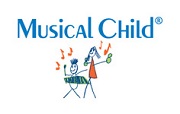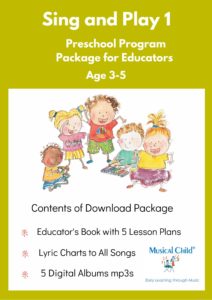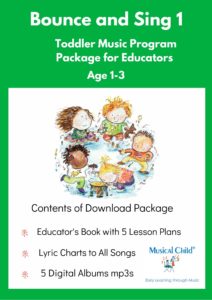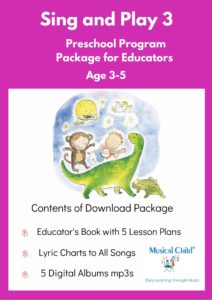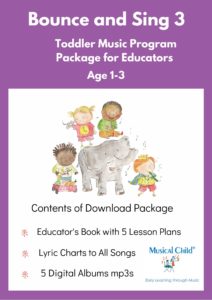Certain nursery rhymes are ‘songs of knowledge’. I have many reasons for teaching nursery rhymes. This post is about passing on common knowledge such as rudimentary counting skills, letters of the alphabet, or the names of the days of the week.
Songs of knowledge according to Daniel J. Levitin
One of my favourite authors on music is Dr Daniel J Levitin at McGill University in Montreal where he runs the Laboratory for Music Cognition, Perception and Expertise. In his second book, The World in Six Songs, he proposes that the human brain co-evolved along with music and that six types of song have been helping to shape us throughout tens of thousands of years.
One of those types of song is the knowledge song. In pre-literate societies, people remember things that are sung to them – important information about which plants are poisonous, which waterholes are safe – for drinking the water and for likely predators.
At a less risky point on the scale of human communication, information is passed on about the way we talk about different days, seasons and festivals, and here I’m reminded of the Nursery Rhyme Monday’s Child.
Eventually, there’s the nitty gritty of how to count. And once we do reach a need for literacy, we need an easy way to remember the order of letters or the spelling of certain words.
Rhythm, rhyme and imagery aid memory
Why is it easier to remember the numbers up to twenty or the letters of the alphabet when they are sung? Partly it is the rhythm of the song that helps it stick in human memory. Underlying the patterns in rhythm, the regular beat attracts our attention and so we are able to tune in to the lyrics.
Rhyme is another attraction and aid to memory so, when reciting or singing the Nursery Rhyme One Two Buckle My Shoe, a four -year old can remember “nineteen twenty, my plate’s empty”. They will find the idea highly amusing if you pull a face and cry when you show them your empty two palms joined as your ‘plate’.
The poetic imagery of song is another powerful pathway to the human brain’s store of memories. The Nursery Rhyme One for Sorrow is a poignant little verse. By learning to sing it, children learn to say their numbers up to seven in order. The rhyming words joy and boy, gold and told and the strong meter help them to memorise the words.
One for sorrow, two for joy,
Three for a girl, four for a boy,
Five for silver, six for gold,
Seven for a secret ne’er to be told.
 Melody and harmony attract attention too
Melody and harmony attract attention too
We like this one so we put it to music. We played on the harp to reinforce its ancient origin. You can listen to a preview here. We added other elements to the honey-trap by setting this nursery rhyme to music. Melody and harmony also attract the brain to listen to the lyrics because they give enjoyment. As William Congreve put it in his play The Mourning Bride, “Music hath charms.” Pleasure chemicals are released when we listen to the music that we like.
Go ahead and sing your ABCs next time you are with young children and watch their faces shine. They seem to know that learning songs of knowledge is what they’re meant to do.
All of the Musical Child lesson plans feature nursery rhymes such as this one, In My Heart, all about understanding emotions.
